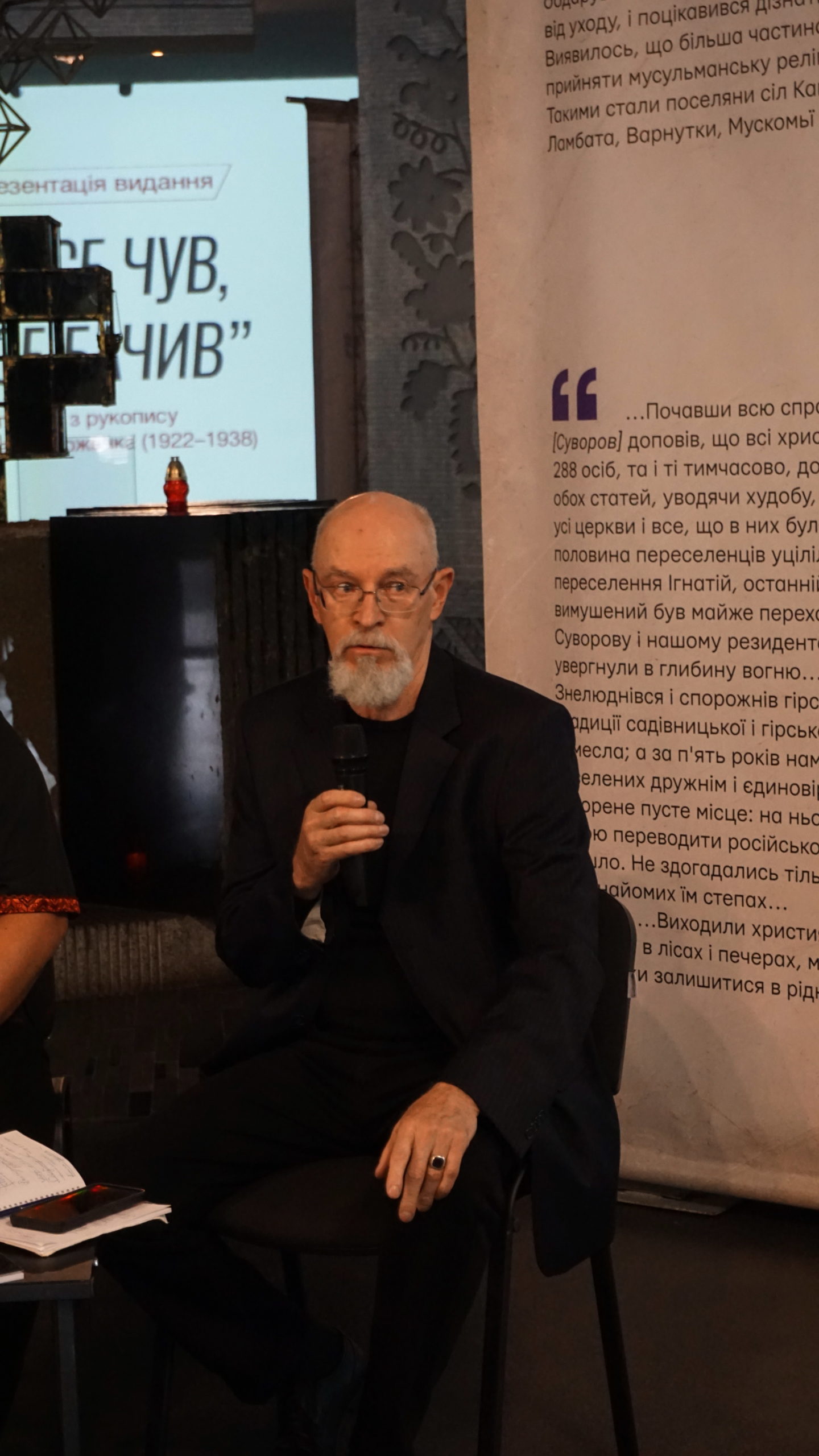The museum hosted a presentation of the book ‘I Heard Everything, I Saw Everything’. Excerpts from Ivan Kocherzhenko’s manuscript from 1922–1938.
On Friday, 19 September, the presentation of the book ‘I Heard Everything, I Saw Everything: Excerpts from Ivan Kocherzhenko’s Manuscripts from 1922–1938’ took place in the Hall of Memory.
Yuliia Kotsur, head of the Department of Oral History of the Holodomor, discussed the primary directions for compiling and expanding the museum’s collection. Today, the museum’s funds comprise over 5,000 eyewitness accounts of the Holodomor. In 2020-2021, we conducted two large-scale expeditions in Ukraine. This year, we also plan a trip to various regions of our country, which aims to collect memories of the Holodomor and the mass man-made famine of 1946-1947. In addition to recording interviews, museum staff also collect photographs, documents, diaries, memoirs and other materials for further preservation and publication.
The head of the Popelnaste village council, historian Oleh Voliansky, emphasised that for more than 20 years, the local community has been researching local history and trying to educate young people in a spirit of national patriotism. Over this period, a booklet on the history of the village has been published, a museum and its virtual version have been created, a website, coat of arms and flag for the village have been developed, the Toloka cultural and educational centre has been established, cultural events have been held, and cooperation with foreign organisations has continued. There are folk monuments to the victims of the Holodomor in the community. The film ‘’Popelnaste. River of Life’ was shot, featuring interviews with residents who survived the Holodomor.
Oleh Voliansky recounted how, in 2021, he learned that Ivan Pohorilyi, the local school headteacher, had been keeping a manuscript of memoirs written by Ivan Kocherzhenko, a resident of the village of Shchaslyve, for over 35 years. He made considerable efforts to obtain permission to study and publish the material.
Valerii Zhvanco, the compiler and author of the foreword to the publication “I heard everything, I saw everything,” local historian, journalist, and director of the Toloka Cultural and Educational Centre immediately emphasised: “The value of Ivan Kocherzhenko’s memoirs lies in the fact that they were written not by a Holodomor victim, but by an active organiser of collectivisation and participant in the dekulakisation. 580 pages of striking information from the “winner.” Ivan Khrysanfovych certainly understood the importance of his notes. He signed each page because he suspected that the manuscript might be destroyed due to its revealing nature. The local historian noted: “When I first started reading these materials, I was struck by a page with a detailed description of a meeting that determined who was wealthy, who was middle class, who was upper middle class, who was poor, and what should be taken from whom. And it was written down in this way: first, second, third priority.”
From 1922 to 1938, Ivan Kocherzhenko served as the head of the village council and collective farm. In 1938, he was arrested for anti-Soviet propaganda and sentenced to 10 years in prison. Valerii Zhvanco eventually found Ivan Khrystanfovych’s criminal case. Notably, the document defined his place of residence as an “ unpassported area”. The journalist admitted that for him, the most emotional part of the manuscript served to highlight when the activist tried to show his humanity. Ivan Kocherzhenko artistically described the story of a family who were labelled kulaks and deported, but they let their daughter-in-law with a newborn baby stay in an empty house because she was from a poor family. When the author of the manuscript describes the events of 1932-1933, he does not use the words “Holodomor” or “famine,” but says: “Not everyone survived the food shortages and hardships, and they are no longer with us…”
At the end of the book, “I heard everything I saw everything,” there is a QR code you can use to read all 380 pages of the original manuscript (the first book of three).
Continuing the event, poetess Zinaida Zhvanco recited a heartbreaking poem about the Holodomor, which she wrote after hearing her grandmother’s memories of the genocide of the Ukrainian people.
Afterwards, Mr Valerii donated the 1947 Book of Accounts with members of the Molotov Collective Farm in the village of Popelnaste, Chervonokamyanskyi (now Oleksandriia) District, Kirovohrad Region, to the main collection of the museum. Those present familiarised themselves with the contents of the document. The book specifies the amount of wheat, rye, flour, and baked bread each person received as payment for their labour. We should note that they often made the calculations in grams. For instance, the first page indicates that on 30 June 1947, Hanna Hryhorivna Bychok received 300 grams of baked bread, and a month later, on 31 July 1947, she received another 100 grams of baked bread. There are also notes about deductions for sugar, oilcake, oil, and for feeding and mating cows. Collective farmers were paid in labour days.
